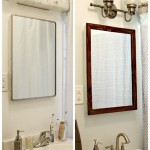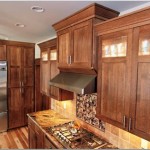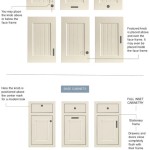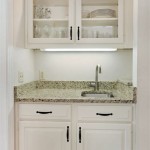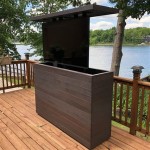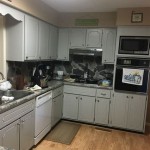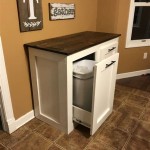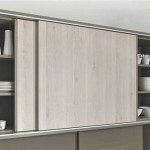What Is The Best Paint For Kitchen Cabinets Without Sanding?
Refacing kitchen cabinets can dramatically transform a kitchen's aesthetic without the extensive cost and disruption of a full remodel. One of the most laborious aspects of cabinet painting is the sanding process, which is essential for ensuring proper adhesion of the new paint layer. However, several paints and techniques allow for successful cabinet painting with minimal or no sanding. This article explores the optimal paint choices and preparation methods for painting kitchen cabinets without sanding, providing a comprehensive guide for achieving a professional finish.
The key to painting kitchen cabinets without sanding lies in selecting a paint that adheres well to existing surfaces, even those that are glossy or previously coated. This typically involves paints formulated with strong bonding agents or primers that create a receptive surface for subsequent coats. Proper cleaning and surface preparation are also critical to ensure that the paint adheres properly and resists chipping or peeling over time. Understanding the nuances of paint chemistry and surface preparation is crucial for achieving a durable and visually appealing result.
Selecting the Right Paint Type
Several paint types are suitable for painting kitchen cabinets without extensive sanding. Each type offers distinct advantages and disadvantages in terms of adhesion, durability, ease of application, and aesthetic finish. An analysis of these factors is essential to selecting the best paint for a specific project.
Chalk Paint: Chalk paint is a popular choice due to its excellent adhesion properties and matte finish. It adheres well to most surfaces without the need for extensive sanding or priming. Chalk paint can be easily distressed for a vintage or rustic look, making it a versatile option for various kitchen styles. However, chalk paint is porous and requires sealing with wax or a protective topcoat to prevent staining and moisture damage, especially in a high-use area like a kitchen. The wax application can require periodic reapplication to maintain its protective properties.
Mineral Paint: Similar to chalk paint, mineral paint offers good adhesion and a matte finish. It is typically formulated with natural minerals and pigments, making it a more environmentally friendly option. Mineral paint often contains built-in UV protection and mildew resistance, making it suitable for humid environments like kitchens. It is generally more durable than chalk paint and may not require sealing, depending on the specific product and manufacturer recommendations. Some mineral paints are self-leveling, resulting in a smooth, professional-looking finish even with minimal application skill.
Acrylic Latex Paint with Bonding Primers: High-quality acrylic latex paint, when used with a bonding primer, can also provide excellent results without sanding. Acrylic latex paint is durable, easy to clean, and available in a wide range of colors and sheens. It is less prone to chipping and cracking than oil-based paints and is water-based, making it easier to clean up. A bonding primer acts as an intermediary layer, creating a strong adhesive bond between the existing cabinet finish and the acrylic latex paint. This method requires careful selection of both the paint and the primer to ensure compatibility and optimal performance.
All-in-One Paint: These paints are formulated to include both primer and topcoat in a single product. They often contain bonding agents that promote adhesion to various surfaces, including laminate, wood, and previously painted cabinets. All-in-one paints simplify the painting process by reducing the number of coats required, saving time and effort. However, it is crucial to choose a high-quality all-in-one paint specifically designed for cabinets to ensure durability and a professional finish. The performance of all-in-one paints can vary significantly between brands, so research and reviews can be helpful in the selection process.
Specialty Cabinet Paint: Several paint manufacturers offer specialty paints specifically formulated for kitchen cabinets. These paints are typically designed for high durability, resistance to stains and moisture, and ease of application. They often contain self-leveling properties and can be tinted to a wide range of colors. Specialty cabinet paints may eliminate the need for a separate primer, depending on the surface condition and manufacturer recommendations. These paints are often more expensive than standard acrylic latex paints, but the investment can be worthwhile for achieving a long-lasting, professional finish.
Surface Preparation is Paramount
Even when using paints designed for no-sand applications, thorough surface preparation is essential for achieving optimal adhesion and a durable finish. Proper cleaning and degreasing are crucial for removing contaminants that can interfere with paint adhesion. This ensures that the paint bonds effectively to the cabinet surface, preventing chipping, peeling, and other forms of damage.
Cleaning: Begin by removing all hardware from the cabinets, including knobs, pulls, hinges, and any decorative elements. This allows for thorough cleaning and painting of all surfaces. Use a strong degreasing cleaner to remove grease, grime, and food residue from the cabinets. Trisodium phosphate (TSP) is a powerful cleaner that effectively removes heavy grease and dirt, but it is important to wear gloves and eye protection when using it. Alternatively, a commercial kitchen degreaser can be used. Rinse the cabinets thoroughly with clean water to remove any cleaner residue. Allow the cabinets to dry completely before proceeding to the next step.
De-glossing: Although sanding is not the primary method, de-glossing the cabinets can improve paint adhesion. A liquid de-glosser chemically etches the surface of the cabinets, creating a slightly rough texture that promotes paint adhesion. Apply the de-glosser according to the manufacturer's instructions, typically with a clean cloth or sponge. Allow the de-glosser to sit on the surface for the recommended time, and then wipe it off with a clean, damp cloth. This process is less labor-intensive than sanding but still provides a valuable improvement in paint adhesion.
Repairing Imperfections: Inspect the cabinets for any imperfections, such as dents, scratches, or chips. Fill these imperfections with wood filler or putty, allowing it to dry completely according to the manufacturer's instructions. Once the filler is dry, lightly sand the filled areas to create a smooth, even surface. This step ensures that the finished paint job is free of visible imperfections and contributes to a more professional appearance.
Taping: Use painter's tape to mask off any areas that should not be painted, such as walls, countertops, or appliances. Apply the tape carefully, pressing it firmly against the surface to create a tight seal. This prevents paint from bleeding onto unwanted areas and ensures clean, crisp lines. Use high-quality painter's tape designed for smooth surfaces to minimize the risk of paint peeling when the tape is removed.
Application Techniques for a Smooth Finish
The application technique is as important as the paint choice when aiming for a smooth, professional finish without sanding. Proper brushwork or spraying techniques, combined with multiple thin coats, can minimize brush strokes and ensure even coverage.
Priming (Optional but Recommended): While some paints claim to eliminate the need for priming, applying a bonding primer can significantly improve adhesion and create a more uniform surface for the topcoat. Use a high-quality bonding primer specifically designed for cabinets. Apply the primer in thin, even coats, allowing it to dry completely between coats. Priming is particularly beneficial for cabinets with glossy or challenging surfaces, as it creates a strong foundation for the paint to adhere to.
Brushing: When using a brush, choose a high-quality synthetic brush designed for use with latex or water-based paints. Avoid using inexpensive brushes that can shed bristles into the paint. Dip the brush into the paint, removing any excess paint by tapping it against the side of the can. Apply the paint in long, even strokes, following the grain of the wood. Avoid applying too much paint at once, as this can lead to drips and runs. Work in small sections, feathering the edges of each section to blend them seamlessly.
Rolling: A small foam roller can also be used to apply paint to cabinets, particularly on flat surfaces. Choose a roller with a short nap to minimize texture. Apply the paint in thin, even coats, rolling in the same direction. Overlap each stroke slightly to ensure complete coverage. Avoid pressing too hard on the roller, as this can create uneven paint distribution.
Spraying: Using a paint sprayer is the best way to achieve a smooth, professional finish on cabinets, especially if intricate details or raised panels are involved. A sprayer provides even coverage and minimizes brush strokes. Thin the paint according to the manufacturer's instructions to ensure proper flow through the sprayer. Practice spraying on a piece of cardboard or scrap wood to adjust the sprayer settings and technique. Apply the paint in thin, even coats, overlapping each stroke slightly. Maintain a consistent distance from the surface and move the sprayer at a steady pace. Wear appropriate safety gear, including a respirator and eye protection, when spraying paint.
Multiple Thin Coats: Regardless of the application method, applying multiple thin coats of paint is crucial for achieving a smooth, durable finish. Allow each coat to dry completely before applying the next. Lightly sand between coats with fine-grit sandpaper (220-grit or higher) to remove any imperfections and create a smoother surface for the next coat. This step is particularly important when using chalk paint or mineral paint, as it helps to create a more uniform finish. Wipe the cabinets clean with a tack cloth after sanding to remove any dust before applying the next coat of paint.
Sealing (If Necessary): If using chalk paint or mineral paint, sealing the painted cabinets with wax or a protective topcoat is essential for preventing staining and moisture damage. Apply the wax or topcoat according to the manufacturer's instructions. For wax, apply a thin, even layer with a clean cloth, buffing it to a shine after it dries. For a protective topcoat, use a brush or sprayer to apply a thin, even layer, allowing it to dry completely before applying additional coats if necessary.
By carefully selecting the right paint type, thoroughly preparing the surface, and employing proper application techniques, it is possible to achieve a beautiful and durable finish on kitchen cabinets without the extensive sanding traditionally associated with cabinet painting. This approach saves time and effort while still delivering professional-quality results.

4 Best Paint For Kitchen Cabinets Without Sanding With Diy Enthralling Gumption

The Best Paint For Cabinets Without Sanding 2025 Celebrated Nest

What Is The Best Paint For Cabinets Without Sanding

4 Best Paint For Kitchen Cabinets Without Sanding With Diy Enthralling Gumption

Best Paint For Kitchen Cabinets 17 Unbelievable Diys Diy Decor Mom

How To Paint Laminate Cabinets Without Sanding The Palette Muse

Best Kitchen Cabinet Paint Finish For Professional Results Pennies A Fortune

4 Best Paint For Kitchen Cabinets Without Sanding With Diy Enthralling Gumption

Best Kitchen Cabinet Paint Finish For Professional Results Pennies A Fortune

How To Paint Your Cabinets In A Weekend Without Sanding Them Chris Loves Julia
Related Posts

